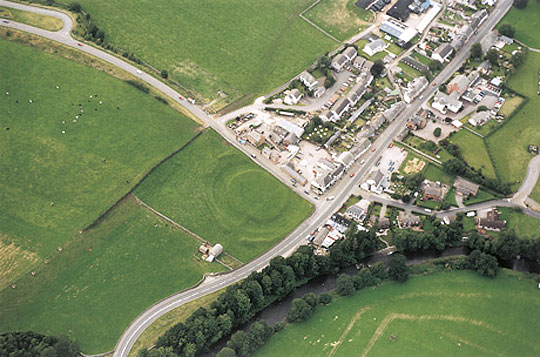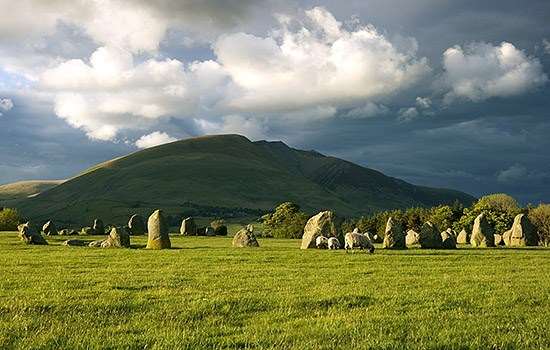History of King Arthur’s Round Table
King Arthur’s Round Table is one of a group of prehistoric megalithic sites and burial mounds in this area and is situated very near Mayburgh Henge.

Neolithic Origins
Despite its name, this ancient and mysterious monument has been dated to the late Neolithic period, between about 2000 and 1000 BC. It consists of a low circular platform surrounded by a wide ditch and earthen bank, a layout characteristic of prehistoric henges.
There were originally two entrances to the central area – one on the south-east, which still exists, and another to the north-west. The latter was destroyed, along with part of the bank and ditch, when the road was constructed.
The site was excavated in 1937, when evidence for two standing stones at one entrance was found. These are also shown on a 17th-century plan.
The exact purpose of the monument remains unknown. It may have been the meeting place for a large prehistoric community, perhaps for trading, though was possibly also for ritual or ceremonial use.
During the excavations a long, shallow trench – perhaps where the dead were cremated – was discovered near the centre of the circular platform.
The site may have acquired its name in the 17th century or even earlier, due to its circular form, a revival of interest in Arthurian legends – it was thought to be a location for jousting – or the traditional associations of King Arthur with the North West.
Further Reading
Bradley, R and Topping, P, ‘The Penrith henges: a survey by the Royal Commission on the Historical Monument of England’, Proceedings of the Prehistoric Society, 60 (1992), 285–324


